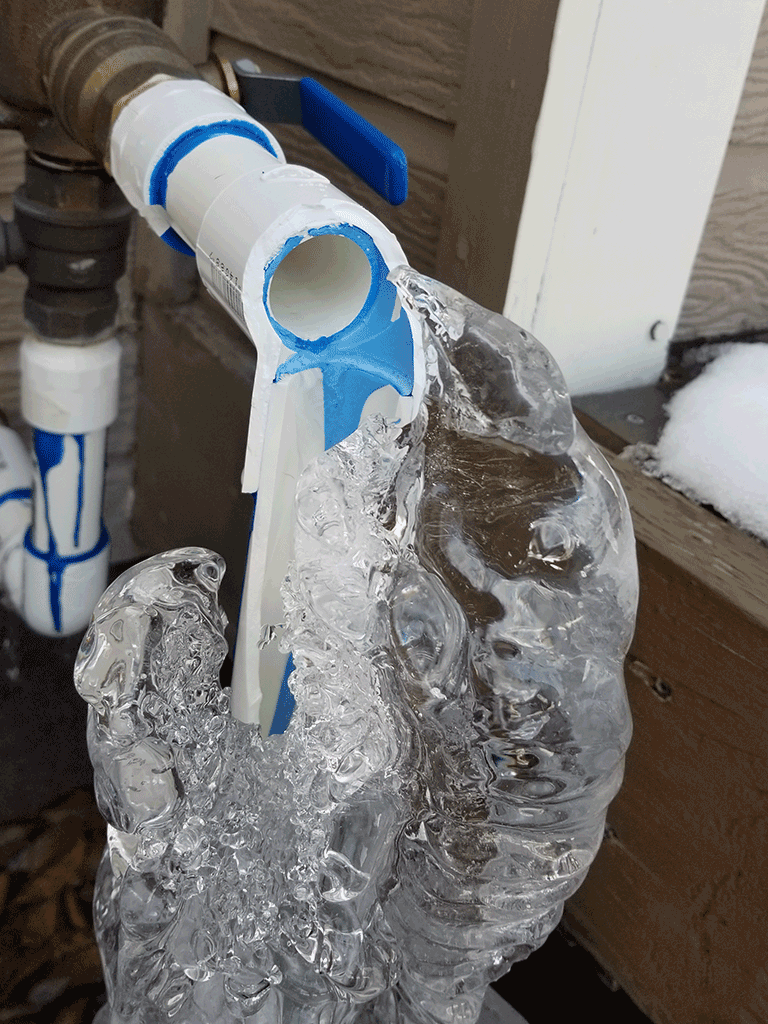Preventing Pipes from Cold Weather: Effective Strategies
Preventing Pipes from Cold Weather: Effective Strategies
Blog Article
Any individual seems to have their own opinion when it comes to Winter Plumbing Precautions: Preventing Frozen Pipes.

Cold weather can wreak havoc on your pipes, particularly by freezing pipes. Here's how to stop it from occurring and what to do if it does.
Introduction
As temperature levels decrease, the risk of icy pipes boosts, possibly causing pricey repair work and water damages. Understanding how to avoid icy pipelines is critical for homeowners in chilly environments.
Avoidance Tips
Protecting at risk pipelines
Cover pipes in insulation sleeves or make use of heat tape to safeguard them from freezing temperatures. Focus on pipelines in unheated or external areas of the home.
Home heating techniques
Maintain indoor spaces adequately heated, especially areas with pipes. Open cabinet doors to enable cozy air to circulate around pipes under sinks.
How to recognize frozen pipes
Seek decreased water circulation from taps, unusual odors or noises from pipelines, and visible frost on subjected pipes.
Long-Term Solutions
Structural adjustments
Consider rerouting pipes away from exterior walls or unheated locations. Add extra insulation to attics, cellars, and crawl spaces.
Updating insulation
Invest in premium insulation for pipelines, attics, and walls. Correct insulation aids maintain consistent temperatures and minimizes the risk of frozen pipelines.
Shielding Outdoor Plumbing
Yard hose pipes and outside faucets
Detach and drain yard tubes prior to wintertime. Set up frost-proof faucets or cover exterior faucets with protected caps.
Recognizing Frozen Pipelines
What triggers pipes to ice up?
Pipes freeze when revealed to temperatures listed below 32 ° F (0 ° C) for prolonged periods. As water inside the pipes freezes, it expands, taxing the pipeline wall surfaces and potentially triggering them to burst.
Risks and damages
Frozen pipes can result in water disruptions, home damage, and expensive fixings. Ruptured pipes can flooding homes and create substantial architectural damages.
Indicators of Frozen Pipeline
Recognizing frozen pipelines early can prevent them from rupturing.
What to Do If Your Pipelines Freeze
Immediate activities to take
If you suspect icy pipelines, maintain taps available to eliminate stress as the ice thaws. Use a hairdryer or towels taken in hot water to thaw pipes gradually.
Verdict
Avoiding frozen pipelines requires proactive procedures and quick actions. By comprehending the causes, indications, and safety nets, homeowners can shield their pipes during winter.
5 Ways to Prevent Frozen Pipes
Drain Outdoor Faucets and Disconnect Hoses
First, close the shut-off valve that controls the flow of water in the pipe to your outdoor faucet. Then, head outside to disconnect and drain your hose and open the outdoor faucet to allow the water to completely drain out of the line. Turn off the faucet when done. Finally, head back to the shut-off valve and drain the remaining water inside the pipe into a bucket or container. Additionally, if you have a home irrigation system, you should consider hiring an expert to clear the system of water each year.
Insulate Pipes
One of the best and most cost-effective methods for preventing frozen water pipes is to wrap your pipes with insulation. This is especially important for areas in your home that aren’t exposed to heat, such as an attic. We suggest using foam sleeves, which can typically be found at your local hardware store.
Keep Heat Running at 65
Your pipes are located inside your walls, and the temperature there is much colder than the rest of the house. To prevent your pipes from freezing, The Insurance Information Institute suggests that you keep your home heated to at least 65 degrees, even when traveling. You may want to invest in smart devices that can keep an eye on the temperature in your home while you’re away.
Leave Water Dripping
Moving water — even a small trickle — can prevent ice from forming inside your pipes. When freezing temps are imminent, start a drip of water from all faucets that serve exposed pipes. Leaving a few faucets running will also help relieve pressure inside the pipes and help prevent a rupture if the water inside freezes.
Open Cupboard Doors
Warm your kitchen and bathroom pipes by opening cupboards and vanities. You should also leave your interior doors ajar to help warm air circulate evenly throughout your home.

As a fervent reader on How to prepare your home plumbing for winter weather, I think sharing that piece of content was really useful. Sharing is caring. Helping others is fun. Bless you for your time. Come back soon.
At This Website Report this page